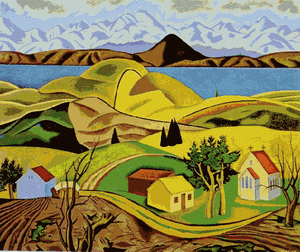Treasures/taonga/taoka

Skyler and I recently made a flying visit to Wellington, where we found time for the ritual trek through Te Papa. Although I have many criticisms of Te Papa - I tend to agree with that old curmudgeon Hamish Keith - I am always able to find things to enjoy there. I think Te Papa displays far too few Maori artefacts, and doesn't take conservation and research as seriously as it should, but I do appreciate the way that it sets aside separate areas where artefacts from different iwi are shown. It is really instructive to be able to look at a group of Kai Tahu artefacts, for instance, in isolation, and see the unique features which South Island Maori culture developed.
I also like the fact that Te Papa has a permanent exhibition on the culture and history of the Moriori people of the Chatham Islands. By contrast, Auckland museum has kept its Moriori artefacts - many of them extraordinarily rare and quite beautiful - out of sight for well over a decade now. The photo at the top of this post (I apologise for its poor quality - it's tricky taking snaps through glass with lights shining behind you) shows two carved posts from a Moriori building. I'd looked at reproductions of the carvings in books, but it was only when I saw them 'in the flesh' that I realised how extraordinarily different they are from the wood carvings made by Maori. If their broad, meandering motifs recall any sort of Maori art, it is probably the limestone paintings of the southern South Island.
We also managed to catch the Rita Angus retrospective at Te Papa. Angus suffers, I think, from the fame which a few of her portraits have gained. I remember writing undergraduate Art History essays on her 'Goddess' self-portraits and her picture of Betty Curnow and dutifully noting the various symbols and their meanings, without really feeling very moved. The same old portraits are prominently displayed in the retrospective, but so are some of Angus' less well-known works, including some wonderful paintings of the landscapes of Hawkes Bay and central Otago. I was familiar with Cass, Angus' famous picture of a lonely train station in central Otago, but I was much more impressed with another painting of the same landscape, which featured layer upon layer of hills and seemed to glow with a light the colour of Cromwell apricots (I can't find the image online, alas, but the painting reproduced at the bottom of this post is another of Angus' central Otago landscapes).
Once again, I think I agree with Hamish Keith, who claimed in his recent TV series on New Zealand art that Angus' landscapes are superior to her portraits. Am I becoming an old curmudgeon?


4 Comments:
Was Angus' drawing of a Moriori in traditional dress on display?
Rita Angus's portraits are incredible - her landscapes also - it is not a question of "better" - her landscapes have an intense luminosity but her portraits - like those of Van Gogh's also have an unique intensity.
We should also celebrate
the art/writings of Joanna Paul.
Maori art / carving / at it's best is some of the most beautiful work I have seen -
and I must confess to concentrating on European art perhaps too much
- although Maori carving and culture or 'taonga' etc has always interested me.
Is Moriori art continuing as Maori art also is? To what extent can we make distinctions?
Actually, Hamish Keith has recently changed his mind about that. After seeing the Angus show at Te Papa he said in an interview on National Radio (10 July) that while he had always thought of Angus as a great landscape painter who also painted portraits he now thinks of her as a great portrait painter who also painted great landscapes.
What interests me about the Angus exhibition is that the curators, Jill Trevelyan and William McAloon, used Angus's own description of the ideal way to present her art to determine the layout of the show. She imagined her work displayed as a temple of art with her Goddess paintings at the centre surrounded by a series of small chapels containing paintings and watercolours related to each other.
By placing the Goddess paintings at the centre of her temple of art I think that she was inviting us to inhabit the imaginative core of her creative world through the understanding of her trio of immortals.
Angus's letters to Douglas Lilburn reveal that her Goddess painting Rutu is not a self-portrait, idealised or otherwise and that the Sun-Goddess and Rutu are Angus's imaginary children and in her mind they were real and very much alive.
If we bear that in mind her temple of art becomes a pretty powerful place because there inside it Angus has placed her successors and her legacy to future generations.
Really enjoy while reading the interesting content on http://paper-writing-service.reviews/edubirdie-com-review/ website that is quite thoughtful. I hope you enjoy the exhibition and had lots of fun as well. I also like the exhibitions and collect the artwork as well.
Post a Comment
<< Home